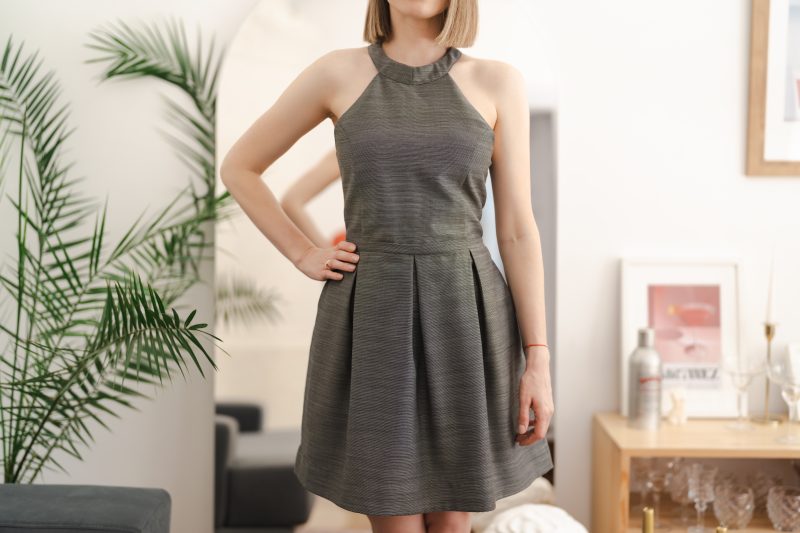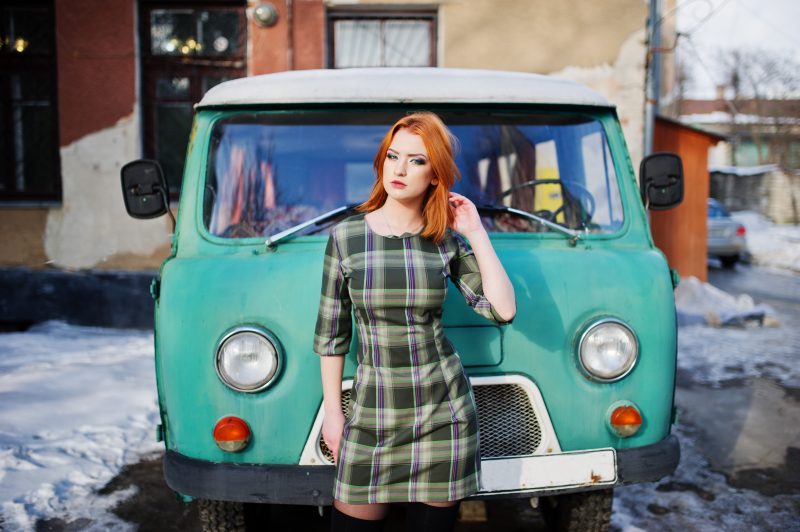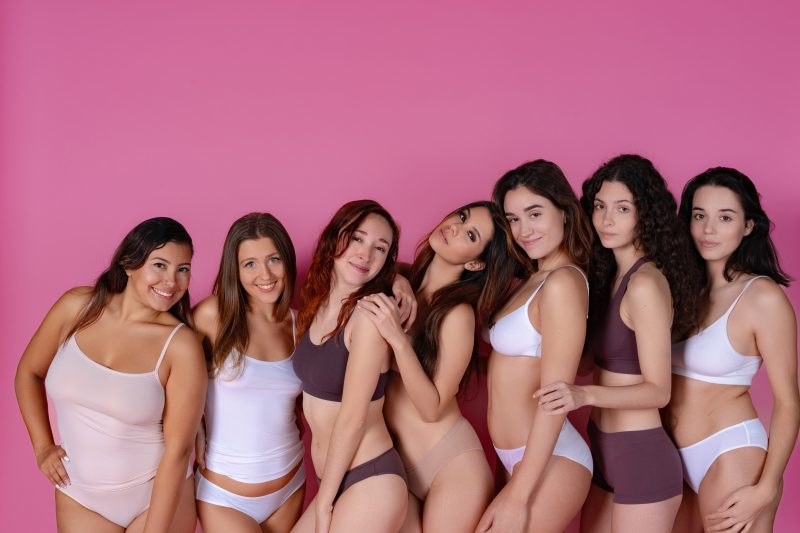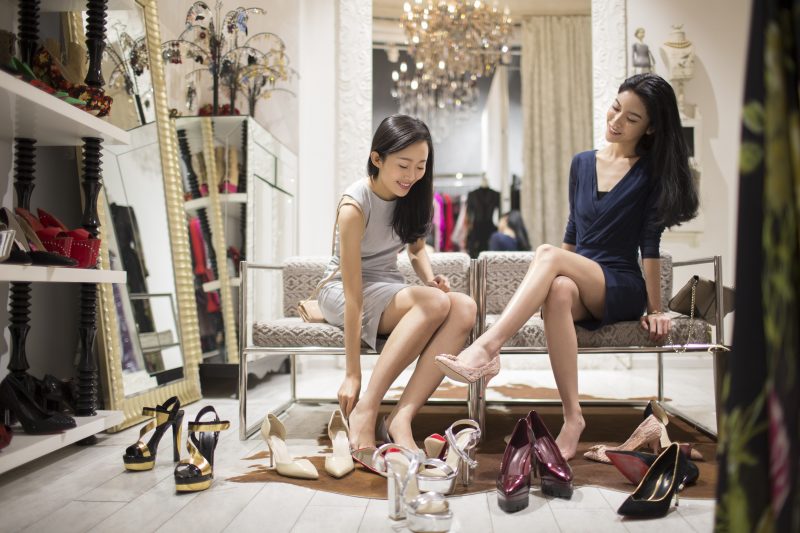I’ve spent my entire career as a fashion editor telling people that you get what you pay for. Quality costs money. Investment pieces are worth it. Fast fashion is a false economy. These are the mantras I’ve repeated in countless articles, firmly believing each one. So no one was more surprised than me when I fell head over heels for a $39.99 dress from Amazon that I initially ordered as a joke.

It started, as most questionable decisions in my life do, after several glasses of wine with my friend Emma. We were sprawled on my couch on a Thursday night, scrolling through Instagram when the algorithm served us both the same ad for a dress that seemed to be stalking every woman between 25-45 on social media. You know the one—that drapey midi dress with the tiered skirt and slightly puffed sleeves that comes in approximately 37 colors and patterns. The one that looks suspiciously like a $430 designer dress that sold out last season, except it costs roughly the same as two cocktails at a decent Manhattan bar.
“That dress is literally everywhere,” Emma groaned, swiping past the ad. “Three different women wore it to my cousin’s baby shower last weekend. It’s like the new Amazon coat but for summer.”
“I need to see this fashion phenomenon for myself,” I declared with the misplaced confidence that comes from Sancerre. “For research purposes. For journalism.”

Two more glasses later, I had ordered the dress in both black and a rust-colored floral print, convinced that this was essential investigative fashion reporting and not at all an impulse purchase influenced by wine and curiosity. I even opted for next-day delivery, because apparently drunk me is very impatient for fashion disappointment.
When the package arrived the following evening, I had mostly forgotten ordering it. I tore it open expecting to find another kitchen gadget I didn’t need (sober me has questions about drunk me’s belief that an avocado slicer is essential kitchenware), and instead pulled out a surprising amount of fabric for something that cost less than my last Uber ride.
My first impression wasn’t great. The material felt thin but not cheap—a lightweight viscose that would definitely wrinkle if you looked at it wrong. The stitching was straight but not particularly refined. It was exactly what you’d expect from a $40 dress, which is to say, nothing special. I hung it in my bathroom while I showered, hoping the steam would release the packaging wrinkles, and promptly forgot about it again.

The next morning, running late as usual, I grabbed the black version in a moment of desperation. My carefully planned outfit had fallen victim to an unnoticed coffee stain, and the Amazon dress was the only clean option that wouldn’t require ironing. I pulled it on, fully expecting to look like I was wearing a shapeless sack, and turned to face the mirror with low expectations.
Oh. Oh. It was… good? The drapey fabric skimmed over my body in a way that was both flattering and comfortable. The sleeves hit at exactly the right spot on my arms. The tiered skirt had enough movement to feel feminine without veering into prairie dress territory. The V-neck wasn’t too low but still created a nice line. I added a belt, some jewelry, and my favorite ankle boots, and suddenly I wasn’t wearing a cheap Amazon dress—I was wearing an actual outfit that looked deliberately chosen rather than panic-grabbed.
I made it to my 9 AM meeting at the office where, in a twist I still haven’t fully processed, our fashion director Simone actually complimented my dress. Simone, who wears exclusively Japanese and Belgian designers and once sent back a press gift from a major luxury brand because the stitching was “philosophically inconsistent with the design.” Simone, who can identify the specific season and year of a garment from twenty paces. That Simone.

“Nice dress,” she said as I slid into the conference room seconds before the meeting started. “Is that the new Christophe Sauvat?”
I froze, momentarily considering whether to lie. I could pretend it was indeed from a designer whose dresses retail for over $500. No one would know. I could preserve my fashion editor credibility. But journalistic integrity prevailed.
“It’s actually from Amazon,” I admitted, bracing for her dismissal. “It was forty dollars.”

Instead of the expected scorn, Simone leaned closer to examine the fabric. “Interesting,” she said, in the same tone she uses when evaluating runway collections. “It has good movement. The cut is derivative of several designers, but they’ve captured the proportions correctly.” Coming from Simone, this was essentially a rave review.
Throughout the day, I received no fewer than seven compliments on the dress, including from our 23-year-old social media manager who asked if she could include it in her Instagram Stories about office style. By the time I got home that evening, I was convinced I’d discovered some sort of fashion unicorn—the mythical garment that was both affordable and genuinely good.
Curious if my experience was a fluke, I went online to read reviews. That’s when I discovered that this wasn’t just a popular dress—it was a full-blown cultural phenomenon with its own Instagram account (@the.amazon.dress) boasting over 30,000 followers. The account featured hundreds of women of different ages, sizes, and styles wearing the exact same dress, often styled completely differently. Some paired it with sneakers and denim jackets for a casual look. Others added statement jewelry and heels for weddings. Teachers wore it with cardigans in classrooms. New moms praised its nursing-friendly design. One woman had even worn it to meet a former president.

The comments section was like a supportive corner of the internet I hadn’t known existed. Women complimented each other’s styling choices, asked questions about fit, and shared which colors they owned (many admitted to having three or more versions). It was basically a fan club for a piece of fabric, but somehow not at all weird?
Intrigued by this unexpected dress community, I decided to conduct a more thorough investigation. I wore the black version to a business lunch, the floral one to weekend brunch, and—in the name of comprehensive reporting—ordered three more colors. I posted my own mirror selfie tagging the Instagram account and received a flurry of messages from friends who confessed they also secretly owned “the dress.” One fashion editor at a major magazine admitted to having it in five colors and wearing it at least weekly. “Don’t tell anyone,” she texted. “I have a reputation to maintain.”
The more I wore these dresses, the more I began to understand their appeal. They hit a very specific sweet spot in the current fashion landscape—feminine but not fussy, comfortable but not sloppy, trend-adjacent without being trendy. They worked for a startling range of body types (the reviews included everyone from size XS to 3XL with mostly positive feedback). They packed without wrinkling if you rolled them instead of folding them. You could throw them in the washing machine. And perhaps most importantly, they required almost zero thought—just put one on, add accessories according to the occasion, and you were done.

But as a fashion editor who has built a career partly on helping readers understand the value of quality clothing, I felt strangely conflicted about my new dress obsession. Was I being hypocritical? Did loving these dresses undermine everything I believe about sustainable consumption and investment pieces? Was I falling victim to the same fast-fashion mentality I often critique?
To reconcile my professional principles with my new Amazon habit, I did what any overthinking fashion person would do: I created a detailed cost-per-wear spreadsheet. If I wore each dress once a week for three seasons, my cost-per-wear would be less than a dollar per wear by the end of the year. Even accounting for potential quality issues, that’s objectively good value. Plus, the versatile design meant I was reaching for the same dresses repeatedly rather than buying new occasion-specific outfits—arguably a more sustainable approach than constantly acquiring new pieces.
I also examined the construction more carefully, trying to understand how this dress could be so affordable yet relatively well-made. The secret seemed to be in its simplicity. The design had few seams, no complex tailoring, and no expensive details like covered buttons or complicated closures. The fabric was basic but not bottom-barrel. Essentially, they’d stripped away everything non-essential while maintaining the key elements that made the silhouette work.

To test my theory that this was a deliberately minimalist design rather than just a cheap knockoff, I compared it side by side with a similar designer dress I owned. The luxury version had French seams, better fabric, and would likely last years longer. But the Amazon version captured about 80% of what made the expensive dress good, which is a pretty impressive achievement for something that costs less than my monthly coffee budget.
This ratio—the 80/20 rule of fashion, if you will—seems to be what’s driven the dress to viral status. It’s not trying to be the best dress ever made. It’s aiming to be good enough to feel like a fashion cheat code: a piece that delivers far more value, style, and versatility than its price would suggest.
The true test came when I wore the black version to a fashion industry event, dressed up with statement earrings and my favorite investment heels. Standing in a room full of editors and influencers wearing actual designer clothing, I braced myself for being found out as a fashion fraud. Instead, I received multiple compliments, including from a stylist whose work I’ve admired for years. When she asked about the dress, I decided to own my Amazon secret.

“Would you think less of me if I told you it was forty dollars from Amazon?” I asked.
She laughed and leaned in conspiratorially. “I’m wearing Amazon shoes right now,” she whispered, pointing to her strappy sandals. “The ones I wanted from The Row sold out, and these look almost identical. No one knows the difference.”
That conversation was oddly liberating. It confirmed something I’ve suspected throughout my career but rarely admitted publicly: even the most dedicated fashion people mix high and low, investment pieces and trendy bargains. The perfectly curated designer wardrobe is largely a myth perpetuated by Instagram and fashion magazines. Real style has always been about the mix—knowing when to spend and when to save, when quality matters and when it doesn’t.

This doesn’t mean I’ve abandoned my belief in investment pieces. My carefully saved-for designer bags, well-constructed boots that I’ve resoled three times, and quality basics that have lasted years remain the backbone of my wardrobe. But the Amazon dress phenomenon has reminded me that good style isn’t exclusively about expensive things.
Sometimes the most democratic fashion items—the ones that become genuine phenomena—are accessible at a price point that doesn’t require financial gymnastics. The Diane von Furstenberg wrap dress became iconic partly because it was relatively affordable when it first launched. Converse sneakers have remained stylish for decades despite their modest price. The L.L. Bean tote achieved cult status through functionality and value rather than exclusivity.
Six months after my wine-induced Amazon purchase, I own the dress in an embarrassing number of colors and patterns. I’ve worn versions of it to work meetings, on weekend trips, to a summer wedding (the midnight blue was perfect with statement earrings), and even to interview a major designer who definitely didn’t realize I was wearing a $40 dress while discussing his $4,000 gowns.

The Instagram account has now swelled to over 50,000 followers, and the dress regularly sells out in popular colors and sizes. There are YouTube videos dedicated to styling it different ways. Fashion forums debate which color is most versatile. It’s been featured in mainstream publications with headlines like “The Dress That Broke the Internet” and “Why Everyone You Know Owns This Amazon Dress.”
What started as a viral product has become something more interesting—a case study in how fashion discovery and influence have changed. This wasn’t a dress marketed through traditional channels or promoted by major influencers. It spread organically through word of mouth, algorithm-driven ads, and genuine enthusiasm from regular women who were delighted to find something that worked for their bodies and their lives at a price that didn’t require financial justification.
Last week, I wore the black version (still my favorite) to meet Emma for dinner. She immediately recognized it as one of “the dresses” and shook her head in mock disappointment.
“I’ve created a monster,” she sighed, taking a sip of wine. “You know that’s the gateway drug to those Amazon sweaters everyone’s talking about, right? Next thing you know, you’ll be one of those people with an Amazon storefront sharing your ‘finds.'”
I laughed and straightened the sleeve of my dress that had seen me through countless work days, evening events, and even an overnight flight (the black hides wrinkles beautifully). “I draw the line at starting my own Amazon influencer account,” I promised. “But I’m not going to pretend I regret this purchase either.”
“So what’s the verdict?” she asked. “Is it actually good, or just good for Amazon?”
I considered the question carefully. “It’s actually good,” I said finally. “Not because it’s perfect or because it will last forever, but because it solves a real problem for a lot of women who want to look put-together without spending a fortune or sacrificing comfort. That’s what good design should do, regardless of the price point.”
Emma nodded thoughtfully, then grinned. “So what you’re saying is I should order one too?”
“Absolutely,” I replied, pulling up the listing on my phone. “But fair warning—you’ll probably end up with five.”
And as we sat there, two fashion-conscious women huddled over an Amazon product page, I couldn’t help but think about how the boundaries between “high” and “low” fashion continue to blur. In a world where luxury brands make sneakers and Amazon makes surprisingly good dresses, maybe the old rules about where good style comes from are finally breaking down. And honestly? That might be the most refreshing trend of all.



